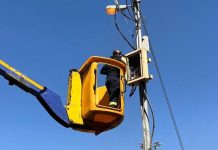Africa-Press – South-Africa. It is true that South Africa is preparing a plan to ration electricity, including up to what you could – but engineers would not – call stage Stage 16, and even beyond.
But not because Eskom is in worse shape than it was a week ago, and not because anyone thinks Stage 16 is a realistic prospect.
Instead, a technical engineering body is extending a standard that currently makes provision only up to Stage 8, in what it describes as an exercise in prudence.
That does not mean everything is hunky-dory; the standard only exists because South Africa does not have enough electricity, and it is being further fine-tuned because Eskom is in such terrible shape that it would, in the words of one expert, be inexcusable not to plan for the worst.
The official load shedding schedule has made provision for rationing up to Stage 8 for some time – and Eskom has been fending off rumours of impending implementation of Stage 8 for years.
Since then, South Africa has seen an average of around Stage 2 develop into an average of around Stage 4, as Stage 6 went from a rarity to a regular occurrence.
Over roughly the same period, the idea that President Cyril Ramaphosa would declare a state of disaster around electricity went from being denounced as fake news, to implemented fact – on the basis of a now officially acknowledged risk of a total, national blackout.
Not for popular consumption
It is against that backdrop that the National Rationalised Specifications (NRS) Association of South Africa says it is working with renewed urgency on what is known as NRS048-9 Edition 3 Code of Practice.
As yet, that document has no snappy popular name, because it is not for popular consumption. Its originator is not public-facing either; the NRS Association this week issued what is believed to be its first-ever press release of its quarter-century existence.
The original NRS048-9 was published in 2010, after the 2008 electricity crisis that introduced South Africa to load shedding. It laid out a path for load shedding up to Stage 4. In 2019, NRS048-9 Version 2 pushed the limit of planning and preparedness to Stage 8.
Version 3, says Vally Padayachee, who chairs the NRS Association management committee ultimately responsible for it, extends the scope to “elevated or higher stages”.
“This proposed revision [Version 3] will include planning and associated risk mitigation measures to implement load shedding beyond Stage 8, and could incorporate the whole base load, if when necessary, wrote Padayachee in his organisation’s first-ever press release.
NRS 048-9 comes into its own when a “system emergency” is declared, a precondition for any load shedding, even Stage 1. The document carries a lot of weight, with the mandate of the National Energy Regulator of SA (Nersa) behind it. But preventing a national blackout remains the ultimately responsibility of the grid’s National Central Control and System Operator. They are doing an excellent job, Padayachee stresses, but also has to manage a hugely complex system on literally a second-by-second basis.
Updating the core planning document, NRS048-9 Edition 2, introduces a larger “formalised planning tool or instrument”, he says, taking away contingency and emergency measures and hopefully in so doing the propensity for any errors to “creep in” during an emergency situation.
In 2021 Gavin Hurford, the person responsible for the real-time operation of the national grid, explained what would happen when Stage 8 was not enough.
Hurford said:
It would be “a little bit more chaotic” than regular load shedding; “literally we would be throwing towns and cities off at a time, not suburbs”.
If things get bad enough, Eskom still has a lot of both legal and practical leeway in what it can do to prevent a grid collapse, because it is hard to imagine that any measures it takes would be worse than a blackout. If the electricity system goes down, the best estimates have it, it will take between six days and two weeks to get it running again, in a best-case scenario. Factor in civil unrest, and it could be a lot longer than that.
At points, 2023 has seen a real risk of an escalation to Stage 8. That would not be pretty, with risks to water supplies and sewage operations, cellphone networks, and, for protracted outages above Stage 4, food production. But it would be a whole lot better than a cold-start of the entire national grid, which NRS048-9 is supposed to help prevent.
Even if that has caused a minor panic about “Stage 16” – while Eskom says things remain much as they have been all year.
“At the current moment there should be no alarm based on the current status,” of load shedding, said Eskom spokesperson Daphne Mokwena.
Eskom’s current forecast is for load shedding to peak at Stage 5 this week, with a lot of Stage 4.
For More News And Analysis About South-Africa Follow Africa-Press






